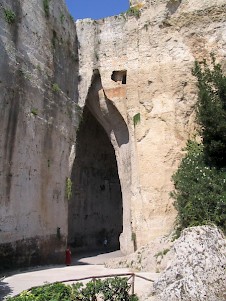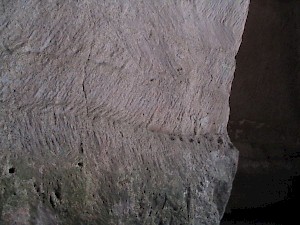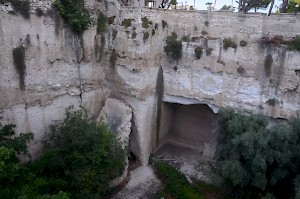Syracuse, Quarries
Q3827524Syracuse: the ancient capital of Sicily.

The three stone quarries of Syracuse are situated to the north of the city, on the mainland, at the foot of the limestone platform. Their current name, latomia, is a Greek loan word, derived from lithos and temnos, "cut stones". The first stone cutters appear to have been active in the sixth century BCE, and work has continued for many centuries. One of the most famous quarries is the Ear of Dionysus (first photo), which is an addition to the Latomia del Paradiso, the best known of the quarries.

The Grotta dei Cordari or Ropemaker's Grotto is the second quarry, and has been closed to the public since 1984. It is immediately beyond the Latomia del Paradiso.

The Latomia dei Cappuccini is the third one, and the one that is situated most easterly. It is notorious because it is the place where seven thousand Athenians were forced to work after they had been defeated by the Syracusans (more...).
In one of his Verrine orations, the Roman author Cicero praises the beauty of the quarries, and a modern visitor can easily understand this, because today, they are a park with luxuriant vegetation, which includes oleanders, prickly pear, citrus fruits, agave, acanthus, and other trees.